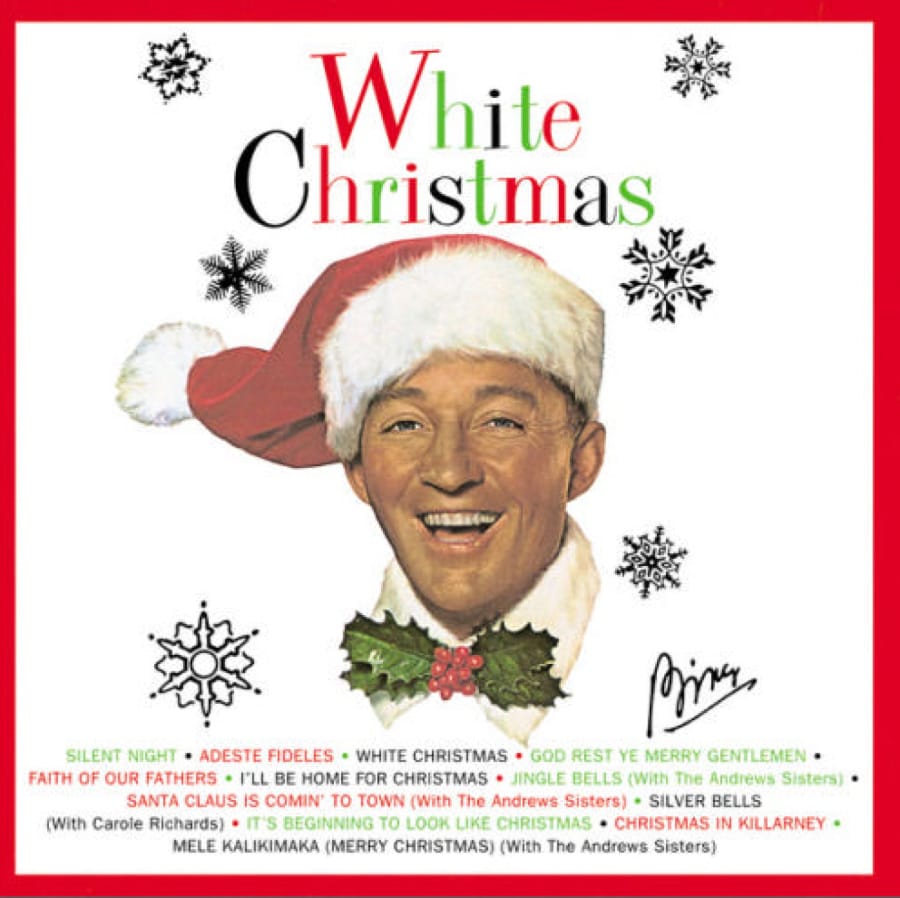Why do we love Christmas music?
We know all the obvious reasons: It conjures treasured memories of holidays past; it allows us to revel in the season’s spirit simply by listening; it gives us a sense of peace through familiarity — we’ve heard these songs a thousand times before.
But there’s another reason we cling to songs such as “White Christmas,” “Have Yourself a Merry Little Christmas” and “It’s the Most Wonderful Time of the Year”: The character of the music itself conveys comfort and joy.
Meaning that even apart from the lyrics, the songs’ melodies and harmonies — and the way performers deliver them — mostly have been designed either to put us at ease or to uplift us. The music does this every bit as much as the words, if not more so.
Sense of longing, hope
Think of the most ubiquitous and beloved of all holiday songs, Irving Berlin’s “White Christmas.” It may seem unlikely that a Russian-Jewish immigrant who was born Israel Isidore Baline would pen the song that epitomizes Christmas in America (and beyond). But Berlin, who essentially created the template for the Great American Songbook, knew exactly what he was doing.
The song’s yearning harmonies and gradually ascending, aspirational melody express a sense of longing — which is quickly resolved. Thanks to the music, we feel the desire of the song’s protagonist, who’s “dreaming of a White Christmas.” That dream is realized by the song’s end, if not by the lyrics then by the music, which ends sweetly.
And whose recording of “White Christmas” long ago became the standard against which all others are compared? Bing Crosby’s, of course, his luxuriant baritone and ultra-relaxed delivery epitomizing everything warm and comforting about the holidays. The lilting melodic embellishments with which he dresses up the melody are like ornaments glistening on a Christmas tree, brightening an already delightful experience.
Or take the endearing sentiments of Hugh Martin and Ralph Blane’s “Have Yourself a Merry Little Christmas,” another holiday standard. The song’s simplicity echoes Berlin’s “White Christmas,” but tinged with passing, minor-key chords as the lyrics envision a time when “our troubles will be out of sight.” More bittersweet than Berlin’s classic, “Have Yourself a Merry Little Christmas” allows for the pain that sometimes accompanies the holiday season, even as the song ends with a message of hope.
Here, too, the tune’s most well-known rendition tells us something, for who better than Judy Garland to capture the darkness stirring beneath the surface? She famously sang it in the 1944 film musical “Meet Me in St. Louis,” itself a nostalgic look back at a seemingly more innocent time (the turn of the previous century). Sweetness and foreboding intermingle in “Have Yourself a Merry Little Christmas,” which tells us that “through the years we all will be together/if the fates allow.” The genius of this song lies in the way both the music and lyrics articulate a wish that all will be well, while acknowledging that danger always lurks.
Which is not to say that every classic Christmas song taps into our complicated dreams for the holidays. Others take a different approach, the songwriters instead seeking to stir optimism, cheer and euphoria. The buoyant rhythms of Meredith Willson’s “It’s Beginning to Look (a Lot) Like Christmas,” for instance, quicken our pulse not only because of the sprightly tempo the song demands but also because of its constant shifting between what musicians call “duple” and “triple” rhythms — dividing the beat by two or three. This back-and-forth rhythmic tension gives the music an irresistibly bouncy quality, as if we were jubilantly skipping through the season.
Similarly, there’s energy to spare in James Brown’s recording of “Santa’s Got a Brand New Bag,” which adds a welcome touch of funk to the holiday equation. And though Donny Hathaway’s landmark “This Christmas” unfurls in long and soulful melody lines, there’s no mistaking the rhythmic pulse that pushes it ever forward. Along these lines, the sassy swing of “Santa Baby,” as sung by Eartha Kitt, reminds us that Christmas music can be saucy, too.
And who can resist Jose Feliciano’s jubilant recording of his “Feliz Navidad”? Granted, practically anything that Feliciano sings carries an incantatory pull. But here he turns a comparatively simple song into quite the celebration. When he arrives at the euphoric bridge, all seems right with the world.
Sumptuous classics
Of course, there are way too many indelible Christmas songs to acknowledge here. But we’d be remiss if we didn’t mention “Jingle Bells,” to which Frank Sinatra brought 1950s’ chic, and “Ave Maria,” on which Vikki Carr lavished her sumptuous, larger-than-life instrument.
In classical music, rhythmic energy tells a great deal of the story. We remember, above all, the exuberant passages of Tchaikovsky’s “The Nutcracker,” as in its “Russian Dance,” which feels practically airborne. Duke Ellington and Billy Strayhorn went a step further with their own “Nutcracker” Suite, a jazz response to Tchaikovsky’s classic showing that Russians can swing, too (as in “Volga Vouty,” the Ellington/Strayhorn answer to “Russian Dance”).
Surely no Christmas choral work is more widely known than the “Hallelujah” chorus from Handel’s “Messiah.” True, the composer originally envisioned this as an Easter-season oratorio, but the fact that it has long since become a Christmas tradition in the United States helps us understand some of what we’re looking for in holiday music: exuberance, which “Hallelujah” provides in profusion.
Before the pandemic struck, no holiday season was complete without singer Johnny Mathis’ “Christmas Show.” Mathis’ sweet-but-not-saccharine renderings of “The Christmas Song,” “Winter Wonderland,” “Sleigh Ride” and others embrace both the joyful spirit and the intensely felt longings of Christmas music.
Ironically, though we won’t be able to experience such shows in person during this pandemic season, the music seems even more valuable now, in that it carries extra meanings.



